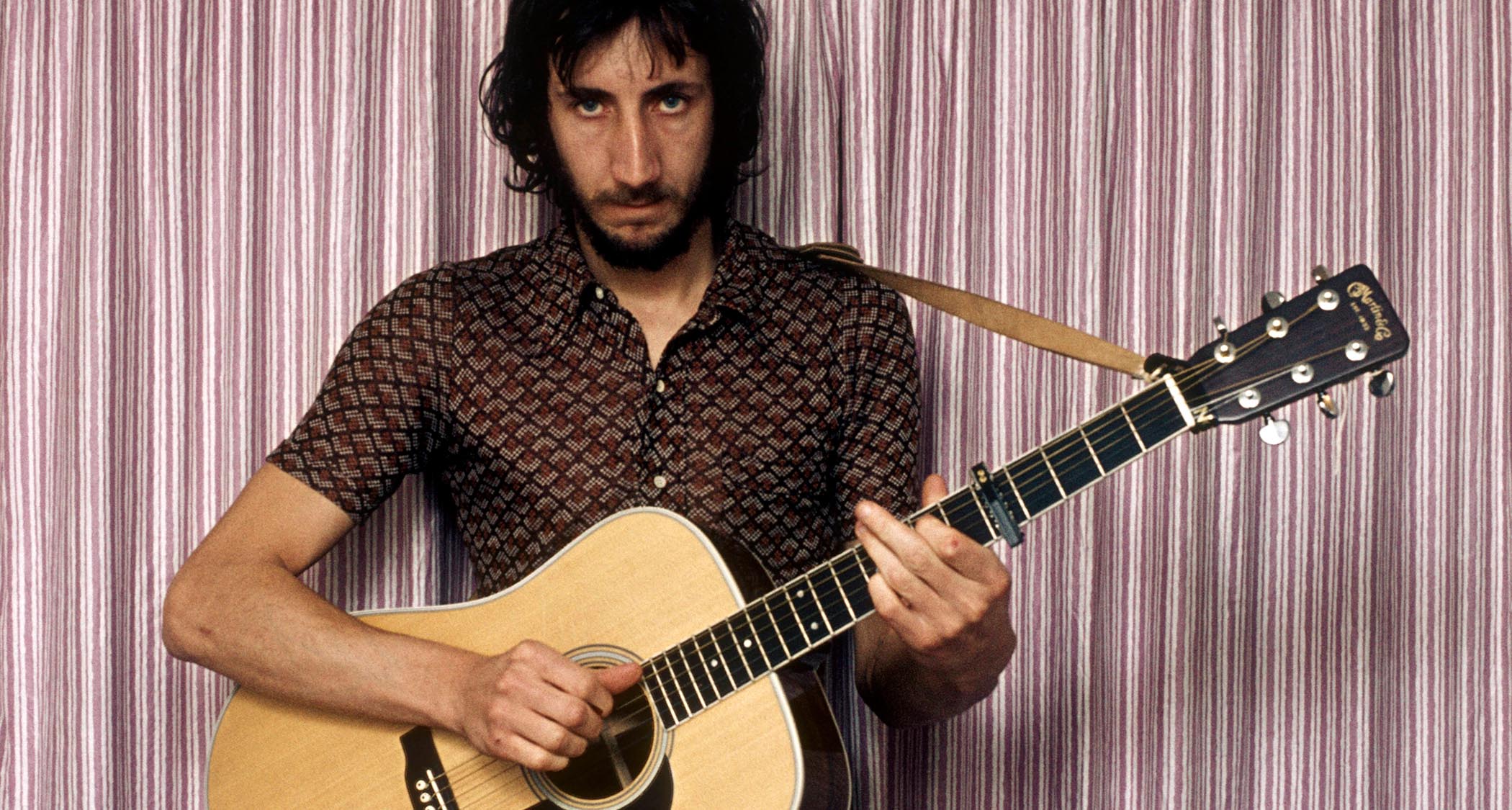
Conjure an image of The Who’s axeman and songwriter Pete Townshend, and you’ll most likely picture him leaping through the air whirlwind strumming a Gibson SG or shoving a guitar headstock-first through a Marshall 4 x 12 cab.
However, Townshend’s innovations as an electric guitarist are mirrored in his acoustic work. Check out the powerful, dynamic strumming of Pinball Wizard, the sophisticated use of moving triads in Substitute, or the delicate and classy 12-string picking on Sunrise, and you’ll hear a guitarist who took the acoustic in a new, untapped direction in the 1960s.
Townshend was born into a musical family in Chiswick, London on May 19th, 1945. His first musical inspiration was American rock and roller Bill Haley while his first forays into performance and writing came at age 11 when he received his first guitar.
At school he formed a group with future Who accomplice and bassist John Entwistle, and the pair were inspired by the trad jazz and skiffle stars of the day, like Lonnie Donegan and Acker Bilk.
It wasn’t long before rock and roll took over, though, and Townshend and Entwistle’s sounds soon became far heavier. But you can’t dismiss the influence Donegan’s strummed skiffle style must have had on Pete’s rhythm work on both acoustic and electric.
In 1961 Entwistle and Townshend joined singer Roger Daltrey in his group The Detours; three years later drummer Keith Moon (surely the blueprint for Muppetts’ skinsman, Animal) joined the band and The Who came to be. Originally playing covers by the popular groups of the day such as The Shadows and The Ventures, when they signed their first record contract they pursued a heavier sound influenced by The Kinks.
The band’s third single, My Generation, gave them a massive hit and propelled them to superstardom. Legendary albums Live At Leeds and Tommy followed, providing the band a legacy that established their position within rock royalty.
Townshend contemporaries Jimi Hendrix, Jimmy Page, Jeff Beck and Eric Clapton became known as lead guitar masters but Townshend often eschewed soloing in favour of creative, driving rhythm playing. He’s a great player to study if you want to get more interesting chord ideas into your vocabulary or want to develop a more powerful, uptempo rhythm style.
This month’s study examines three facets to Pete’s playing: the folk inspired fingerpicking that opens the track, his big strummed open chords, and his creative use of triads moving up the treble strings against a pedal tone, as here the open fourth string.
While there’s just enough time in the track to pick up a guitar pick after the fingerpicking, my video shows how you can tuck the pick in between the fingers when fingerpicking then quickly grab it to move to strumming.
Get the tone
Amp Settings: Gain 3, Bass 7, Middle 6, Treble 7, Reverb 2
The acoustic most associated with Townshend, although he’s pictured here with a Martin D-35, is the Gibson J-200 that can be heard on tracks like Pinball Wizard. Naturally any acoustic will get you in the ballpark, but make sure the strings are fresh and the action not set too high. I used a Martin D-28 1937 Expert, and the above settings are for when using an acoustic guitar amp.
Study Piece
Bars 1-16: This fingerpicking section is very common for the time and you’ll hear similar ideas in artists like Bob Dylan and Paul Simon. At the core is the thumb picking an alternating bassline from the sixth to fourth strings.
It’s based around a G to C shape where the G bassnote remains on the sixth string. This is followed by a very 1970s rock idea with a note descending on the fourth string while the remaining notes stay in place. This always sounds dramatic!
Bars 17-end: The first strumming section may look straightforward but Townshend moves chord shapes quickly. If you are new to his style, work on clean chord movement first then build up the speed. A tip here is that I’ve used a G Major shape where the second string remains open, meaning less finger movement between chords.
Keep the strumming hand relaxed and pay attention to the chords played off the beat. From bar 25 you’ll hear the characteristic triad against bass note sound of The Who. It gives loads of chord colour without having to think too much about what’s going on theory-wise.







